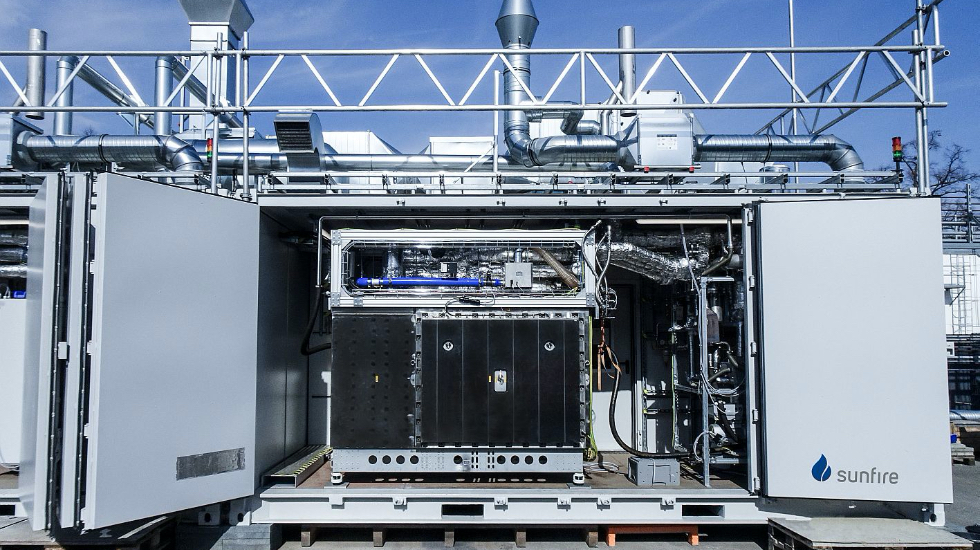Sunfire: Successful commissioning of the world’s largest SOEC electrolysis module
 Dresden, 4 May 2021
Dresden, 4 May 2021
Dresden-based electrolysis company Sunfire doubles capacity of its solid oxide cell electrolysis module to 225 kW
A further milestone was reached in the development of the second generation of Sunfire’s innovative high-temperature electrolysers. The company successfully commissioned the world’s largest electrolysis module based on solid oxide cell (SOEC) technology for the first time. The tested module is the heart of a multi-megawatt electrolyser to be delivered to Nestes refinery in Rotterdam as part of the EU-funded MultiPLHY project.
A total of 60 stacks with 1800 electrolysis cells are integrated in the SOEC module, producing 63 Nm²/h of hydrogen from renewable electricity and steam. This corresponds to a hydrogen production quantity of 5.7 kg per hour. Due to the use of steam, high-temperature electrolysis is particularly efficient compared to other electrolysis technologies – it achieves an efficiency of up to 84 %LHV to AC. The power consumption of Sunfire’s SOEC module is thus less than 40 kWhAC/kgH2. In total, the second generation of the high-temperature electrolyser consists of twelve SOEC modules, which together produce an output of approximately 2.7 MW. Sunfire’s previous version of the module consisted of 36 stacks and reached a capacity of 137 kW.
“The successful series connection of the electrolysis cells will enable us to minimize the costs for the power electronics in the future. With the successful test operation, we have achieved a major milestone in the further development of our high-temperature electrolysers, as the SOEC modules form the heart of the plants,” says Oliver Posdziech, Head of Large Systems Development at Sunfire.
The optimized SOEC module can be manufactured industrially and will be used in the world’s first multi-megawatt electrolyzer as part of the pioneering MultiPLHY project. The consortium partners CEA, Neste, Paul Wurth, ENGIE and Sunfire have set themselves the goal of producing green hydrogen for the production of high-quality biofuels at Neste’s refinery in Rotterdam. The project makes a significant contribution to the decarbonisation of the oil and gas industry. MultiPLHY was launched in spring 2020, is part of the EU-funded Horizon 2020 FCH2-JU programme and receives funding of €6.9 million.
In addition to its use in the MultiPLHY project, the successful commissioning of the module also forms the basis for the further development of the high-temperature co-electrolysis technology (Co-SOEC) for the highly efficient production of synthesis gas from carbon dioxide and water vapour in the BMBF-funded Kopernikus P2X-2 project.

This project has received funding from the Fuel Cells and Hydrogen 2 Joint Undertaking (JU) under grant agreement No 875123. The JU receives support from the European Union’s Horizon 2020 research and innovation programme, Hydrogen Europe and Hydrogen Europe Research.

The BMBF-funded project “Kopernikus P2X-2” (funding code 03SFK2Q0-2) was launched in September 2019 and will run for three years. The project focuses on the research, validation and implementation of Power-to-X concepts.
Sunfire GmbH
Gasanstaltstraße 2
01237 Dresden
Germany
Phone: +49 351 896797-0
Fax: +49 351 896797-831
Internet: www.sunfire.de
Email: info@sunfire.de
